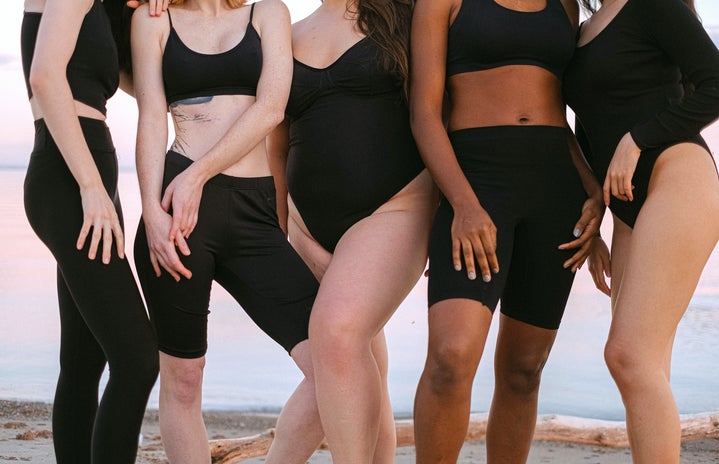I grew up surrounded by beautiful, fat women. They’ve learned while fat, laughed while fat and loved while fat – just as anyone else would. But for some reason, I always recall them being unable to shop while fat.
My mom, in particular, has always hated shopping. She has openly longed for plus-sized clothing options that don’t look as if they were made for senior citizens. When she is able to find something that suits her style in her size, it is often three times the price of the straight-sized alternative.
Social media strategist, community builder and freelance journalist, Amanda (Ama) Scriver focuses on writing about the lives and health of fat individuals. Regarding accessible plus-size clothing, she simply wishes there was a staple in the mall where women of size could purchase cheap, fashionable clothing like everyone else.
“The other day, I was like ‘Oh man, I gotta go buy some underwear’ and had no idea where to go buy underwear, and I was like, nobody else has these problems,” said Scriver.
She continued that often the only options in malls are overpriced. While she is an advocate for slow fashion, Scriver finds it unethical to critique plus-sized individuals for consuming fast-fashion.
“Slow fashion is really expensive and people who identify as plus-sized or people of size, typically cannot afford slow fashion, and it’s not within their realm of what they can get,” said Scriver.
“When I see people online [shaming] fat folks for [shopping] at Old Navy or Forever 21, it’s like who [really] cares? Just let people shop where they can.”
It is important to note that fatphobia affects everyone, not just people of size. I, myself, am what some would label as “midsize,” and I often find myself struggling to accept my body for the way it is, especially while shopping.
Leslie DeShaw is a retail worker and understands this struggle first-hand, citing vanity sizing and the “body-positivity movement” as the culprits.
“You go into one store and you’re a size ten and then go into another store and you’re a size sixteen,” said DeShaw. “I think we should just have standardized clothing sizing.”
In an article for TIME, Eliana Dockterman infers that this sizing debacle is directly linked to fatphobia.
“Studies have shown that shoppers prefer to buy clothing labelled with small sizes because it boosts our confidence. So as the weight of the average American woman rose, from 140 lbs in 1960 to 168.5 lbs in 2014, brands adjusted their metrics to help more of us squeeze into more-desirable sizes (and get us to buy more clothes),” Dockterman said.
Perhaps, if we were less interested in avoiding the dreaded label of “fat,” we would be able to shop more effectively. The ideology of body neutrality focuses on the sentiment that “you can exist without thinking about your body in one way or another, positive or negative.”
Scriver, who cites this movement as a product of the eating disorder community, sees it as an effective way of feeling comfortable in one’s own body. Coupled with radical fat liberation, it can guide individuals toward tackling systemic discrimination.
“Body positivity and all of that has totally lost its meaning,” Scriver groaned. She continued that social media softened what once was an important action for the fat community. Feeling the need to fit into labels like “thin,” “midsized,” or “fat,” can usher more thoughts about one’s physical appearance rather than radical acceptance for all.
Amanda touched on the recently published “body-positive” book, My Body by Emily Ratajkowski. Scriver, who is currently working on a review of the novel, admitted her first qualms with it.
“She’s thin; she’s white, she’s a model, she’s rich. I have questions, like ‘is she the person to be writing this book?’”
The novel serves as a perfect example of what body positivity has become. What was once championed by fat individuals, now belongs to everyone, even thin, conventionally beautiful models. While the movement toward dismantling fatphobia has a place for everyone, comparing the criticism of thin bodies to the oppression of fat ones is not a valid method.
So, what can we do? DeShaw suggests moving toward a more inclusive, measurement-based system for clothing sizes that have no implications of self-worth attached to them. Scriver insists that people continue to practice radical fat acceptance and “work towards changing the systemic discrimination that fat folks face.” She individually practices body neutrality with a fat acceptance framework.
The resounding sentiment is for fat people to continue working toward radical fat acceptance. Hopefully, with this continued effort, my mom will be a lot more comfortable shopping for clothes.


